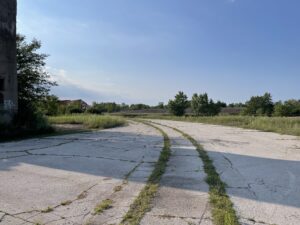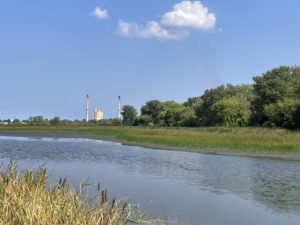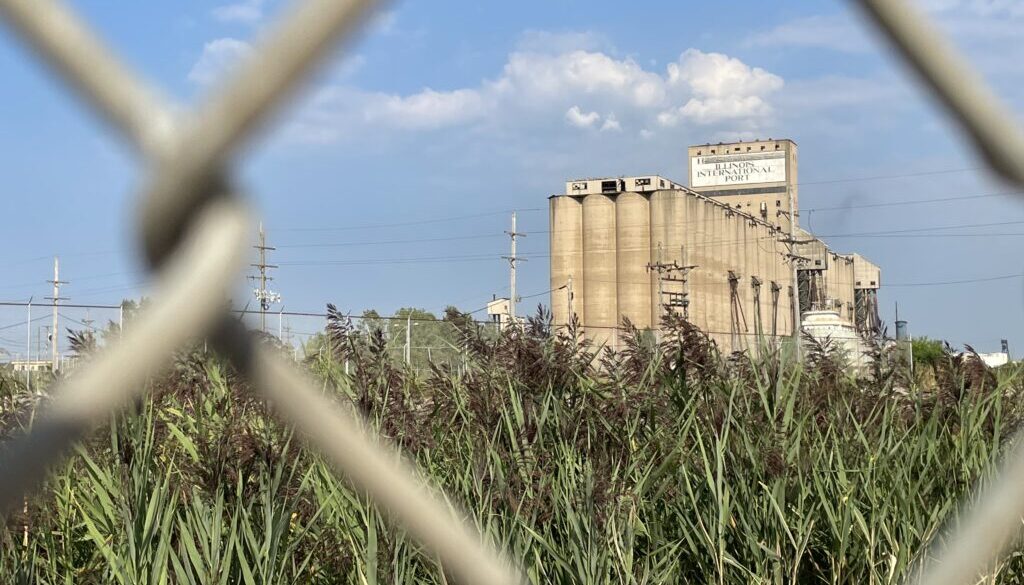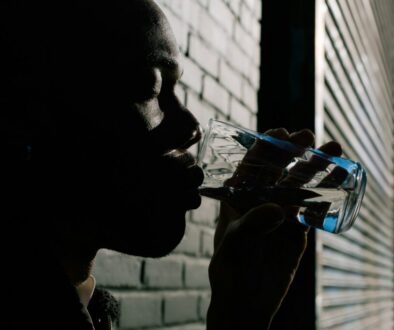Chicago’s southeast side pushes back against pollution
By Paul Gordon
For more than 100 years, the Southeast Side of Chicago has been a magnet for industry – a place where working class families made their homes and raised their children alongside steel mills, grain elevators, cement kilns and other operations drawn to the easy transportation of goods afforded by rail lines and the proximity of the Calumet River.
There once was a common saying in the area: “If there is soot on the windows, there is food on the table.”
The price for the industrial prosperity has been high: Now the area is home to two Superfund sites, multiple landfills, and numerous abandoned tracts of heavily polluted land that lie adjacent to a new cast of polluters – factories constantly busy milling, grinding and combusting.
Once a marshy area, 40% of Chicago’s wetlands have disappeared since 1900. The wetlands, which filter pollutants and prevent flooding, began to drain when the city altered the course of the Chicago River, sending its industrial waste-fouled waters away from population centers.
Without the wetlands, residents of Chicago’s Southeast Side experience high rates of flood damages, poor air quality, heat vulnerability, and other harmful environmental impacts, leaving people struggling for ways to protect their health and the environment.
“All of the environmental issues facing Chicago are magnified on the Southeast Side where industrialization and contamination have created an inhospitable and dangerous environment for many,” said Daniel Suarez, conservation manager for Audubon Great Lakes, a regional arm of the national nonprofit conservation group.
Last year, in a letter to Chicago Mayor Lori Lightfoot, EPA Administrator Michael Regan said the “conditions facing Chicago’s Southeast Side epitomize the problem of environmental injustice…”
Regan noted that the neighborhood ranked at the “highest levels for many pollution indicators… including fine particulate matter, air toxics, cancer risk, respiratory hazard, traffic proximity, lead paint, Superfund site proximity, hazardous waste proximity, and wastewater discharges.”
The letter states that since 2014, more than 75 facilities in Chicago’s southeast area have been investigated by local, state and federal agencies for environmental law violations.

Slow progress
Gina Ramirez, a third-generation Southeast Side resident, recalls her mother’s childhood stories about growing up two blocks from a US Steel mill, which once employed nearly 20,000 workers at its now-vacant site by the mouth of the Calumet River. As a girl, Ramirez’s mother would play in the red industrial soot that blanketed her family’s car. As an adult, she developed severe asthma, a condition she attributes to her exposure to the mill’s pollutants. Watching her mother’s health struggles drove Ramirez into community activism.
“Seeing her having to take her inhaler on low air quality days was this daily reminder that industry can have a detriment to your health,” said Ramirez. And the health risks continue.
“It should not be normalized to have a medical van testing for respiratory issues and asthma outside of schools, but it’s a reality,” said Óscar Sanchez, another area resident. But air quality is only one of the Southeast Side’s many problems. “If you overlap maps that show the worst air quality, highest flooding, and highest cumulative environmental impacts, they are all one map,” said Sanchez.
Ramirez and Sanchez are both members of the Southeast Environmental Task Force (SETF), a community-based group that works to create awareness around environmental injustices. One key effort is a mission to expand and take advantage of neighborhood green spaces.
“I grew up without air conditioning, so my refuge was the lake, that was my air conditioning in the summer,” said Ramirez. “Green spaces, in a lot of ways, are our natural cooling centers.”
The focus for SETF is on creating green spaces in ways intended to reduce flooding, improve air quality, and reduce urban heat island effects.
SETF is not alone in its efforts. Local officials working with nonprofit organizations are turning some former dumping grounds for manufacturing waste into restored marsh and grasslands to serve as parks and habitats for wildlife. More than 400 acres has already been converted, and Chicago officials plan to eventually manage more than 2,000 acres of natural space on the Southeast Side.

Development continues
But amid the efforts to clean up a landscape long scarred by industrial activity, new polluting industries are eying Chicago’s Southeast Side for expansion. A scrap metal recycling facility had been planned for the Southeast Side until community protests and EPA intervention led the Chicago Department of Public Health to block the project.
Now, developers are proposing locating an underground warehouse in the area, beneath a former steel site. Some community members worry the project will add to air pollution problems, bringing diesel-driven truck traffic.
And legacy pollution remains. A 43-acre structure that contains millions of tons of contaminated dredged material from nearby water systems was set to close in 2021, but state officials have extended the dump’s life despite opposition from local residents and organizations.
Community organizers say keeping the dump open could threaten the city’s water supply and continue to disproportionately burden residents on the Southeast Side.
Sanchez said the Southeast Side’s history as an industrial dumping ground needs to end; environmental justice is long overdue.
“Just because we are poor doesn’t mean we should be treated poorly,” he said.
(Featured photo- Abandoned grain elevator at Illinois International Port. By Paul Gordon.)
 EWG
EWG


